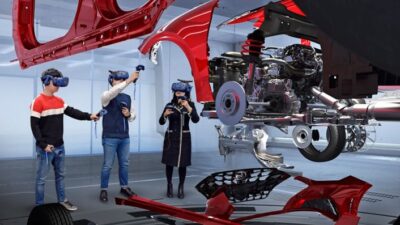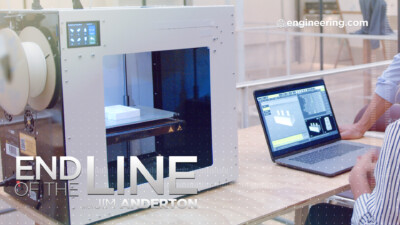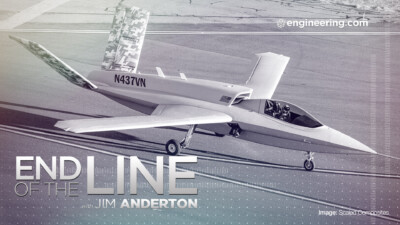Things are becoming obsolete, faster. Why?
A new-in-the-box high-quality Samsung computer monitor is quite a find, especially when it’s free. Unfortunately, my new/old Samsung uses a VGA input, and modern laptops use HDMI. Could an adapter cable work? Yes, but market forces are in play. An adapter costs $20, while a far superior and larger new monitor can be purchased for four to five times that amount, and comes with an HDMI cable. Does it make economic sense to use the old unit? Not with so low a price premium for the new unit, which comes ready to go and features a manufacturer warranty. New means better, faster and easier to use. And at such a low price premium over repurposed, old electronics, it’s a no-brainer. The old one? Likely e-waste.
Access all episodes of End of the Line on Engineering TV along with all of our other series.
* * *
Episode Transcript:
Ever go through your basement and discover something new-in-the-box, that you forgot you had? I did, and I found this: a dandy Samsung computer monitor, brand-new and ready to go. Just the ticket for an extended display on my personal laptop.
I had, of course, forgotten the critical factor that defined monitors from a decade ago: this VGA port.
This antique method of connectivity is a type that goes back to the days of the original Cannon plugs used on aircraft and military equipment. A metal shell, multiple pins, and the plug mated to the jack with mechanical fasteners. Those of you old enough to remember CRT monitors may remember how the tiny screws that held the VGA plug into place would occasionally be lost, and the friction fit was frequently inadequate to keep the connection secure. Rubber bands, scotch tape and other means filled the gap, and as IT technicians of the time may recall, bending the pins with careless insertion was also a common problem.
I talk to people all the time who tell me that they wish manufactured goods would go back to the way they were in the “good old days” when things were well-built. Well, HDMI is an example of how things today are much, much better. But my modern laptop, of course, won’t support medieval monitor technology, so my choices were two: buy an adapter cable that connects HDMI to DVI or VGA, then deal with any software issues, or hand off the Samsung to Goodwill, and turn to Amazon.
The old Samsung monitor probably cost a couple of hundred bucks at least when new, but I discovered to my surprise that a high resolution, 27-inch-wide new monitor with stand could be had with next day delivery from Amazon for $129. Plus, there was a $10 off coupon, and a surprise $20 incentive credit from MasterCard. So, my choices boiled down to $20 for a cable, or 100 bucks for a completely new monitor, with HDMI cable.
Guess which way I’m going.
Simply put, the value proposition of resurrecting the old machine with a new adapter is too expensive at 20% of the price of an entirely new unit, at much higher specification, with a warranty.
Just how the economics could possibly work out that you can buy a computer monitor with cable for only five times the price of just a cable itself, well that’s another story. But I just generated another piece of e-waste, and maybe somebody shopping at the thrift store will pick it up and find a way to repurpose it. Or it may end up in a third world country, ground up for salvage.
My choice had nothing to do with the environment, or conveniences like next day delivery from Amazon. Like everyone, I’m busy. I need the devices in my life to enhance my day-to-day activities, not become a project in and of themselves.
A new-in-the-box monitor will work right out of the box. I’m using it today, and I haven’t bothered to read the instructions, because I don’t need to. And because it is new, I have confidence that it will work for years and not let me down at a critical time, like when I’m scripting an End of The Line.
So, for an $80 price premium, I bought better performance, a manufacturer’s warranty, much less risk of failure and most importantly, I bought back my spare time. Environmentalists out there, take note. Everyone is busy these days, and busy people will always consider the hassle factor when deciding whether to repurpose something old or buy something new.



